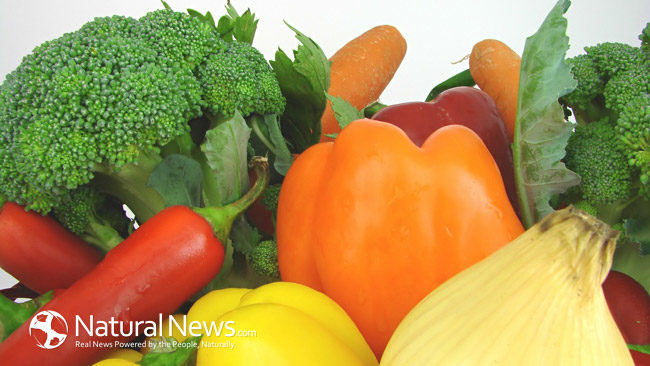Pesticides are chemicals used to spray non-organic food to ward off and kill insects. They’re poisons proven to harm (and kill if consumed in sufficient quantity) the people exposed to them, and cause anything from reproductive problems to cancer, even in small amounts. It’s best to buy organic to avoid them altogether, but in cases where that’s not an option, here’s a look at 15 of the worst pesticide-laden foods, based on a study by the USDA Pesticide Data Program, to steer clear from when doing your grocery shopping. I list the number of pesticide residues found on average, followed by the potential human side effects of the pesticides found when consumed in non-organic food.
- Apples: 42 Pesticide Residues. Of them, 7 are known or probable carcinogens, 19 are suspected hormone disruptors, 10 are neurotoxins, and 6 are developmental or reproductive toxins.
- Celery: 64 Pesticide Residues. Of them, 13 are known or probable carcinogens, 31 are suspected hormone disruptors, 12 are neurotoxins, and 14 are developmental or reproductive toxins.
- Tomatoes: 35 Pesticide Residues Found. Of them, 5 are known or probable carcinogens, 14 are suspected hormone disruptors, 6 are neurotoxins, and 3 are developmental or reproductive toxins.
- Cucumbers: 35 Pesticide Residues: Of them, 9 are known or probable carcinogens, 25 are suspected hormone disruptors, 12 are neurotoxins, and 9 are developmental or reproductive toxins.
- Grapes: 34 Pesticide Residues. Of them, 4 are known or probable carcinogens, 17 are suspected hormone disruptors, 10 are neurotoxins, and 6 are developmental or reproductive toxins.
- Nectarines: 33 Pesticide Residues. Of them, 7 are known or probable carcinogens, 19 are suspected hormone disruptors, 9 are neurotoxins, and 6 are developmental or reproductive toxins.
- Peaches: 62 Pesticide Residues. Of them, 10 are known or probable carcinogens, 29 are suspected hormone disruptors, 12 are neurotoxins, and 11 are developmental or reproductive toxins.
- Potatoes: 37 Pesticide Residues. Of them, 7 are known or probable carcinogens, 12 are suspected hormone disruptors, 9 are neurotoxins, and 6 are developmental or reproductive toxins.
- Strawberries: 54 Pesticide Residues. Of them, 9 are known or probable carcinogens, 24 are suspected hormone disruptors, 11 are neurotoxins, and 12 are developmental or reproductive toxins.
- Spinach: 48 Pesticide Residues. Of them, 8 are known or probable carcinogens, 25 are suspected hormone disruptors, 8 are neurotoxins, and 6 are developmental or reproductive toxins.
- Sweet Bell Peppers: 49 Pesticide Residues. Of them, 11 are known or probable carcinogens, 26 are suspected hormone disruptors, 13 are neurotoxins, and 10 are developmental or reproductive toxins.
- Kale: 55 Pesticide Residues. Of them, 9 are known or probable carcinogens, 27 are suspected hormone disruptors, 10 are neurotoxins, and 10 are developmental or reproductive toxins.
- Collard Greens: 46 Pesticide Residues. Of them, 9 are known or probable carcinogens, 25 are suspected hormone disruptors, 10 are neurotoxins, and 8 are developmental or reproductive toxins.
- Lettuce: 51 Pesticide Residues. Of them, 12 are known or probable carcinogens, 29 are suspected hormone disruptors, 9 are neurotoxins, and 10 are developmental or reproductive toxins.
- Blueberries: 52 Pesticide Residues. Of them, 8 are known or probable carcinogens, 24 are suspected hormone disruptors, 14 are neurotoxins, and 7 are developmental or reproductive toxins.





